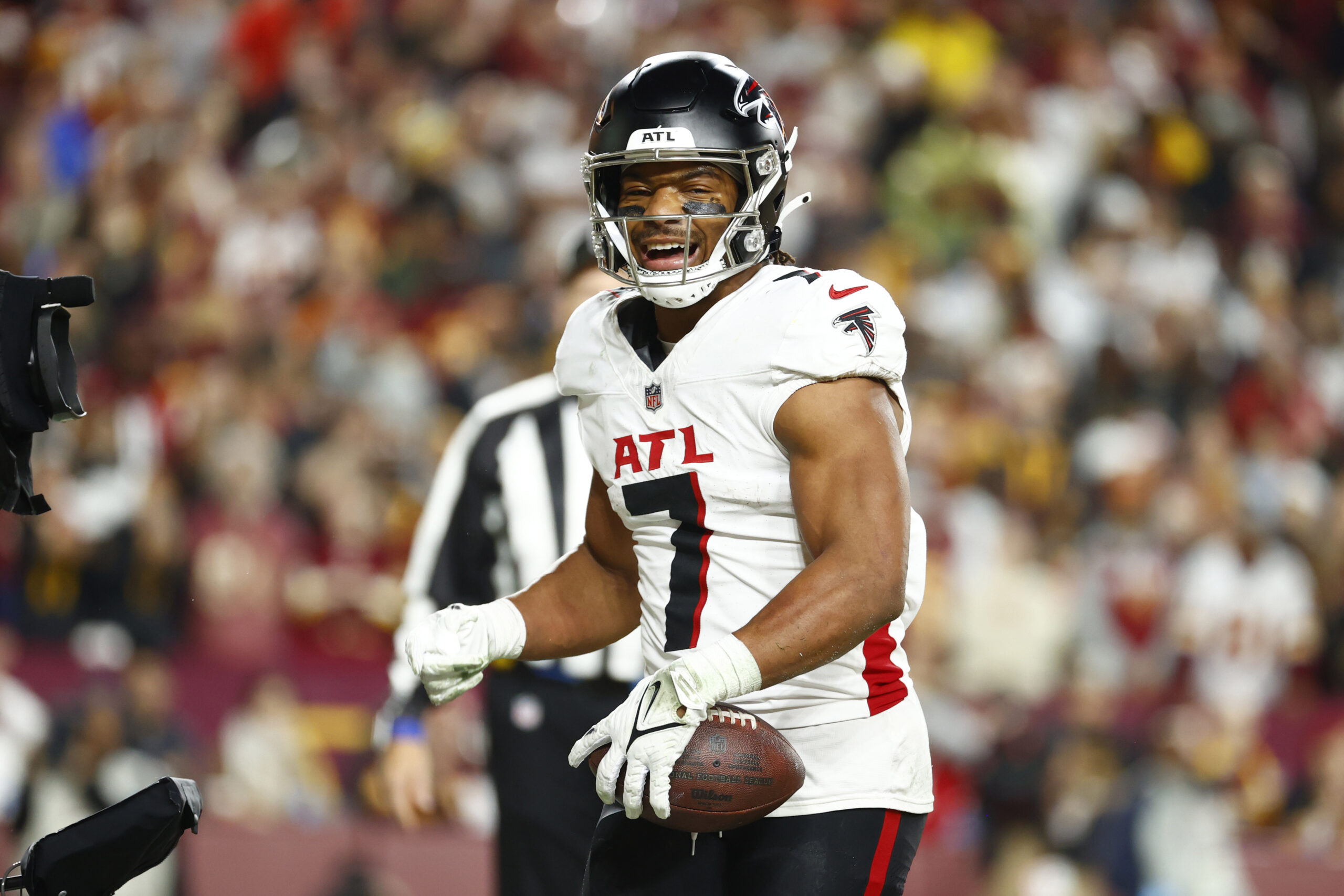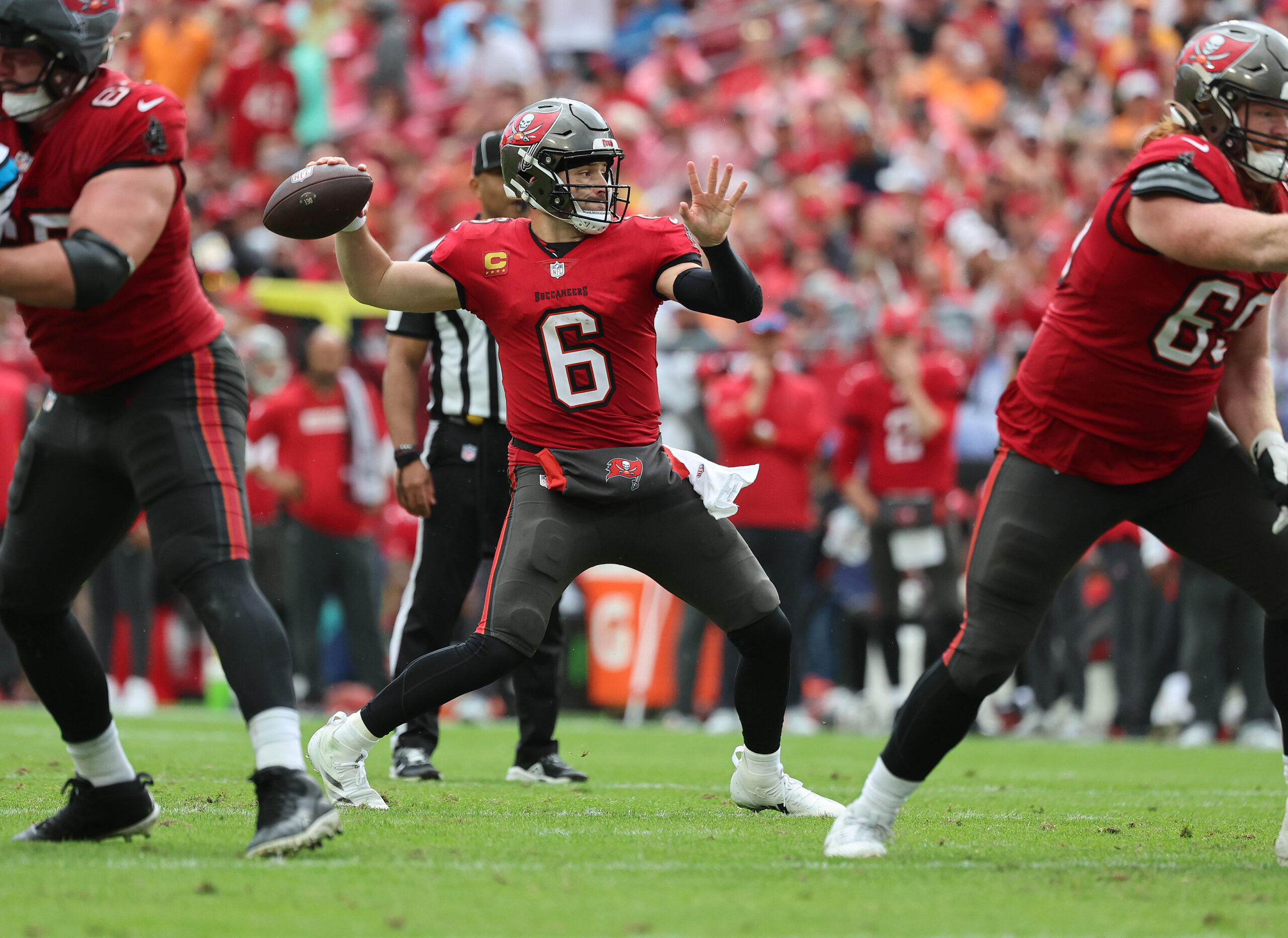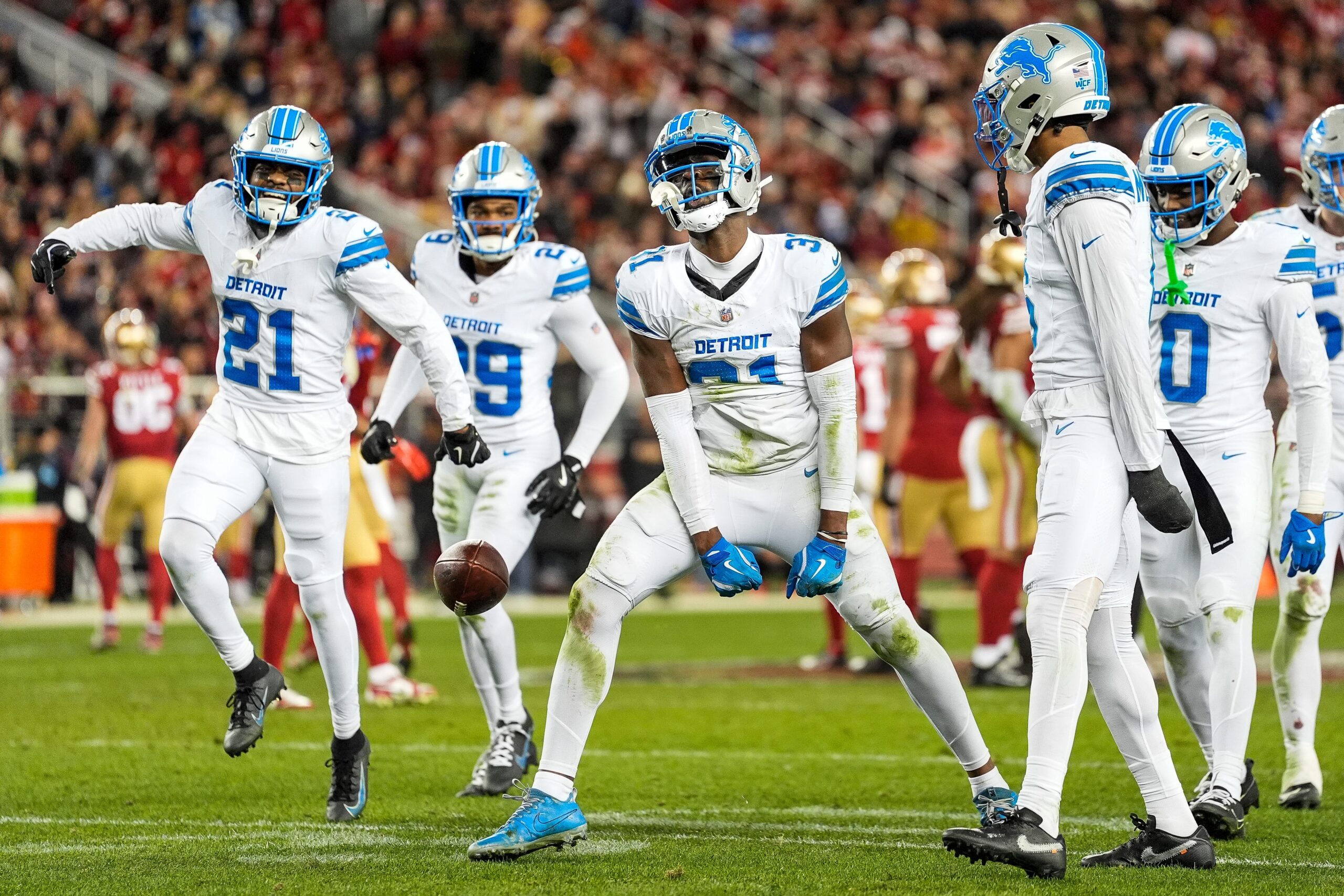Expert Analysis
11/30/23
5 min read
The NFL Rookie Wall: Fact or Fiction?
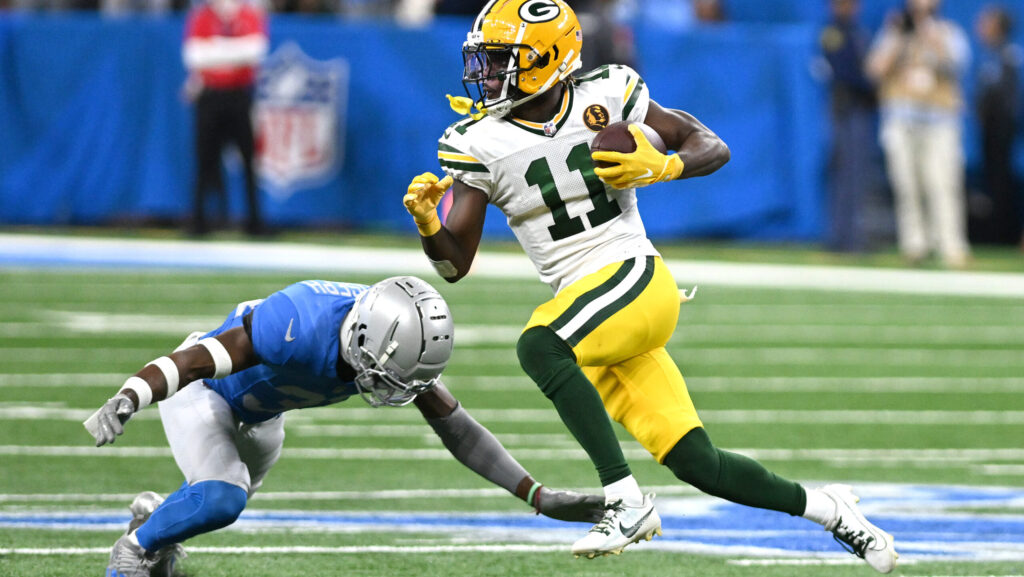
The rookie wall is real and far from spectacular.
At least it was for me, with apologies to Teri Hatcher in the infamous Seinfeld episode.
The college football regular season has come to a close, which means that many rookies in the NFL right now are about to venture into uncharted territory.
A lot of them have been there a while already.
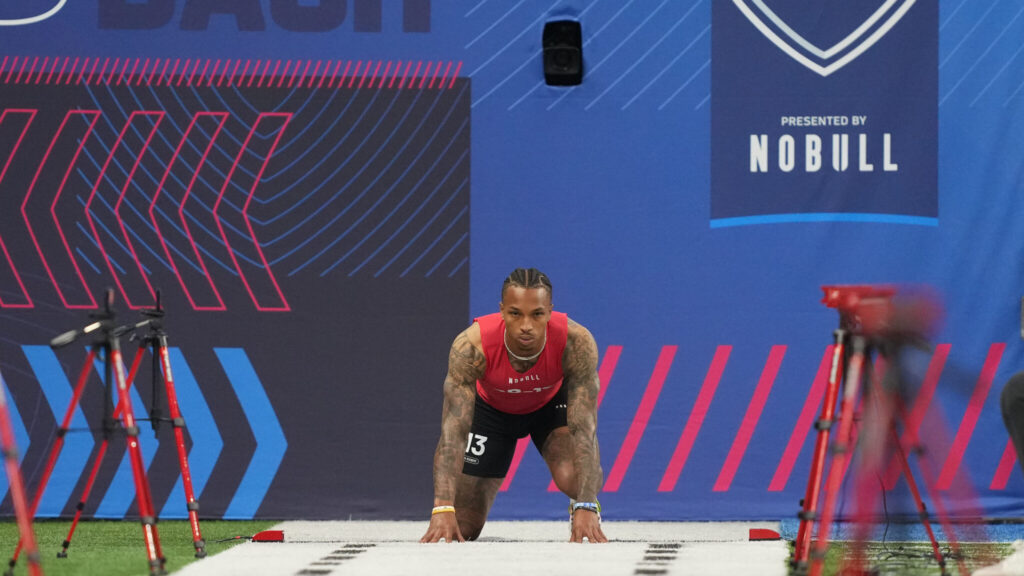
Season Starts Before the Draft
Most Division I football players start fall camp the first week of August and play their first game roughly a month later, over Labor Day weekend. They have 12 regular-season games, ending the weekend after Thanksgiving. Many of them will have some extra practices after that in preparation for a bowl game but the intensity of those sessions varies significantly from program to program.
Then, some get a chance at the pros, and frankly, the “rookie wall” process starts with the pre-draft period. Unlike a typical college or NFL offseason, there is no downtime. That entire process is critical for their draft stock, from their last college snap to the NFL Combine and player pro days. Players immediately go to training centers to prep for those significant events and probably train as intensely as they ever have.
Pro Schedule Takes Over
After the draft, rookies flow right into minicamps and OTAs, then maybe get a couple of weeks off before they report for training camp sometime between July 18 and July 25 — a full week or two earlier than they did in college.
Next, they play three games before they would ever have played one at the college level. And before you say, “those are only preseason games,” I can assure you, for most rookies, those games are pretty much the most critical contests they’ve ever played in as it relates to making a living playing the game they love.
Right when they would typically start to wind down from a grueling, twelve-game college season, they begin the stretch run in the NFL. They have five or six games left in the regular season, even though they’ve already been practicing since mid-July and have 14 or 15 games under their belt already.
But it’s not just the length of the season that is an adjustment for these guys. It’s the schedule.
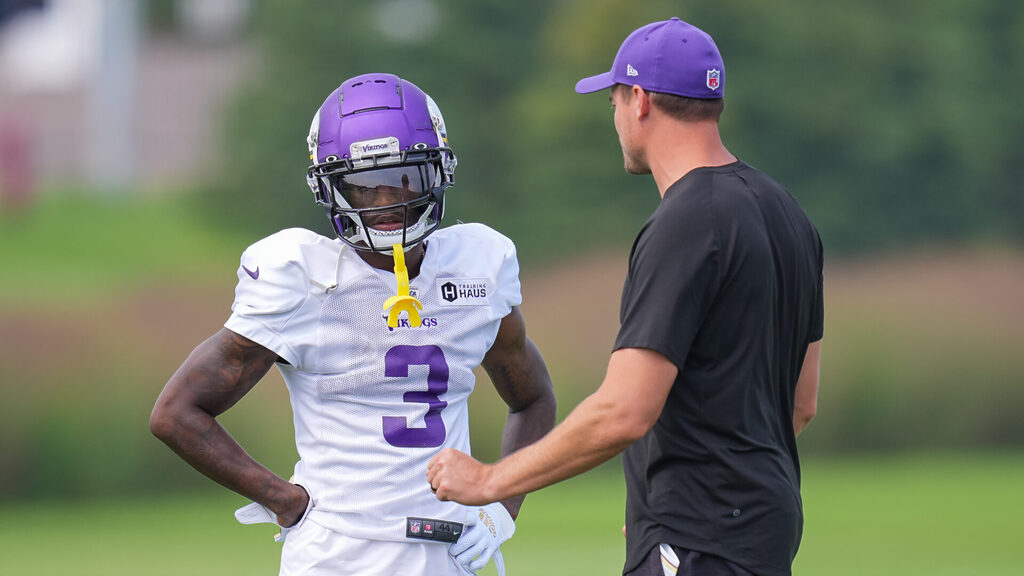
in the Real World
When I was a rookie with Washington in 2001, our head coach Marty Schottenheimer had rookies lift weights at 6 a.m. every morning before we would have extra positional meetings, team meetings, more positional meetings, walk-throughs, lunch, practice, post-practice meetings, etc. Coming from a college schedule where I probably woke up between 8 a.m. and 9 a.m. every day, it was an adjustment.
Whether it was the length of the season or just my body clock being off, I was a mess. The next thing I knew, I was going to bed as soon as I got home from the workday at 5 p.m., waking back up at 9 p.m. and then maybe eating something before trying to go back to sleep, knowing I had to wake up at 5 a.m. for the next day.
During my rookie season, I lost 20 pounds, even though Washington had many food and supplement options at my fingertips. I started the year at 308 pounds, and by the time the season was winding down, I was down to 288 pounds, which is not big enough for guard or tackle in the NFL. I wasn’t even hungry most of the time, which was decidedly not normal at that point in my life. It was so weird.
In fairness, I came from an Ivy League football schedule in which we only played 10 regular-season games. It was an even steeper adjustment for me than most, but I wasn’t even getting on the field as a rookie. I was inactive for 12 of 16 games. I can’t imagine what it would have been like if I had been a starter or a key contributor in my first year.
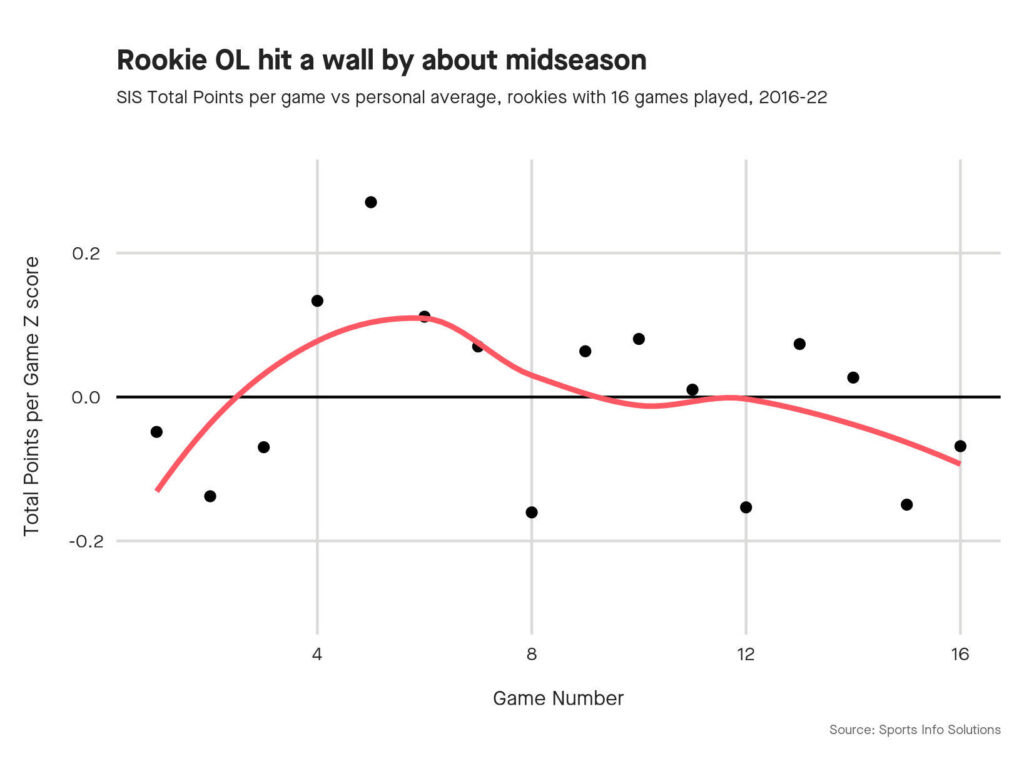
The Rookie Wall Is Real
So why does my personal rookie wall story matter? Because I’m not the only one who ever hit it. Far from it. There’s a reason why there’s a term for it.
It also can be a differentiator for some teams this time of year based on how each organization handles their rookies and, of course, the rookies themselves. I’d like to think that, with the improvements in sports science in the past 20 years, these players are in a much better position to handle it than I was, but that doesn’t mean it is easy.
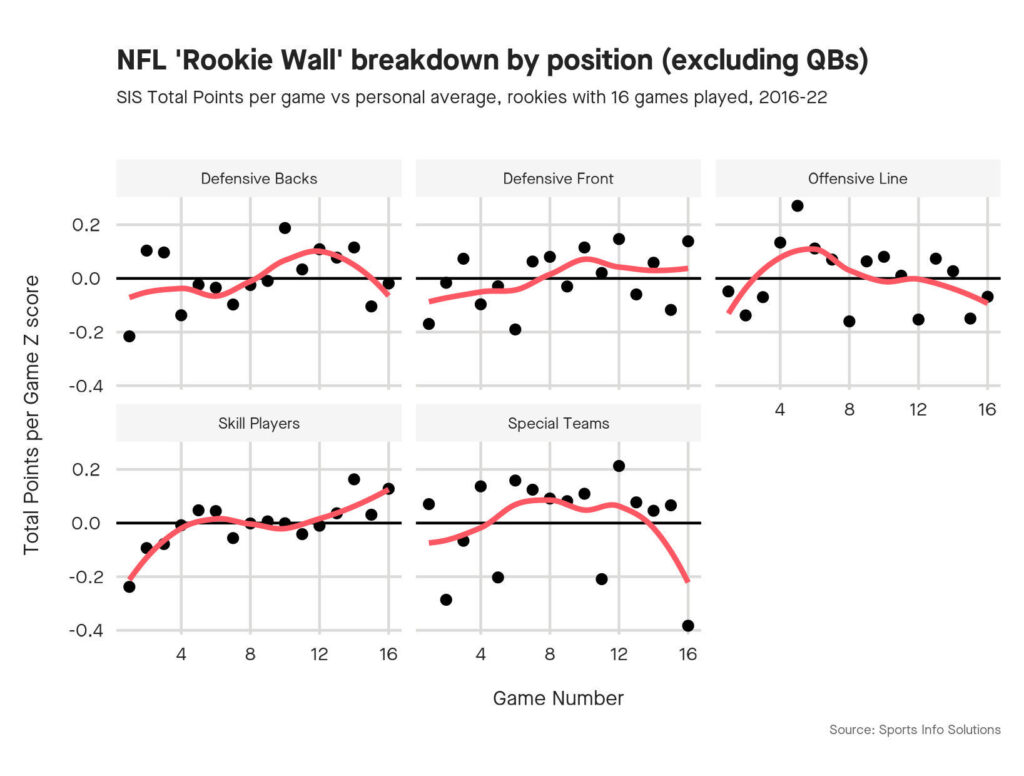
It means if your team is getting significant contributions from rookies, keep an eye on their performance to see if it drops off in December and January.
If it does, you’ll likely know the reason why.


